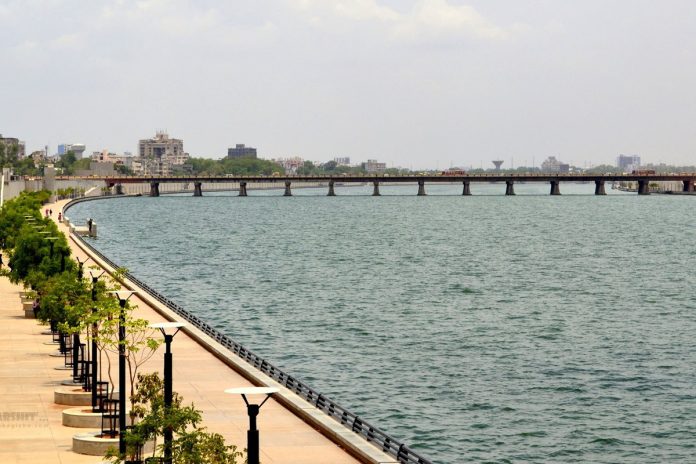Ahmedabad: The study conducted by scientists from ISRO’s Space Applications Centre revealed significant temperature disparities within Ahmedabad, termed Intra-Urban Heat Islands (IUHI). Using a mobile vehicle equipped with a HOBO thermo-hygrometer, air temperature measurements were taken across various zones including commercial areas, residential localities, near water bodies, and in green spaces.
The research team—comprising Neeru Jaiswal, Sanjib Deb, Sambit Panda, Anup K. Mandal, Aman Khan, and C. M. Kishtawal from the Atmospheric and Oceanic Sciences Group at ISRO-SAC—found notable temperature variations, sometimes within less than 1 km. These differences were most pronounced in urban areas, traffic junctions, market zones, and near water bodies, with a 2.5°C difference observed within a 10 km range through Ahmedabad’s central region.
The team collected temperature data during May since 2019, focusing on how urban structures and green spaces impact heat exposure. The study noted a cooling effect in areas with higher vegetation, water bodies, or barren land, citing a temperature drop of 0.8°C near Ghuma and a rise of 1.5°C in Bopal market. Additionally, it was found that temperatures at traffic junctions were 1°C higher than nearby areas, with locations like Vikram Nagar, Sanand, and Paldi showing temperature variations due to a mix of vegetation, market activity, and traffic conditions.
Temperature differences were more pronounced at night compared to daytime, with urban areas experiencing up to 6°C higher temperatures than rural areas, particularly in regions like Satellite Road and Kalupur, and 4°C higher in places like Bopal and Teen Darwaja. While measuring temperatures from the SAC Bopal campus to the IIT Gandhinagar campus (40 km) between 11:45 am and 3:25 pm, the study recorded a maximum difference of 1.43°C between noon and midnight.
A night measurement from SVP airport to the railway station via Bopal-Ghuma revealed significant temperature variations, with higher temperatures on busy market roads (38.39°C) and lower temperatures (33.16°C) in less populated areas like Ghuma. Along the route, urban temperatures were up to 5°C higher, and rural sites showed differences up to 6°C, with the maximum difference recorded at 5.84°C near the Satellite area at 9 pm. The urban reference site consistently recorded higher temperatures than rural areas, with the transect reaching a maximum of 38.3°C near Teen Darwaja at 9:55 pm.

